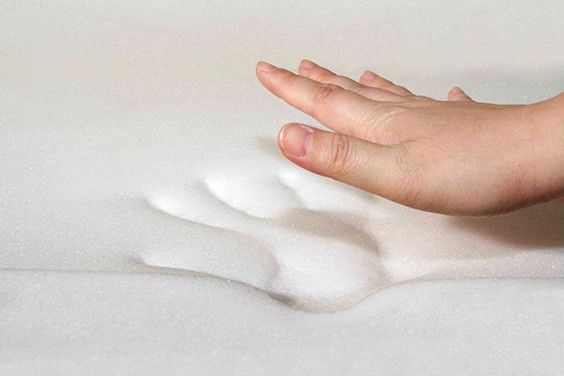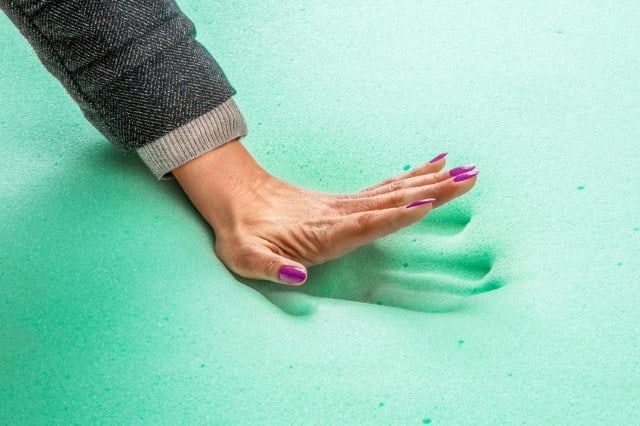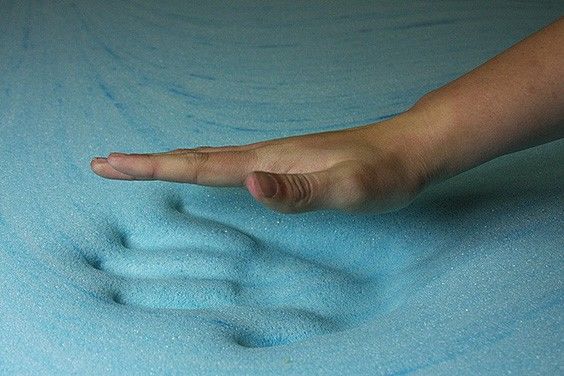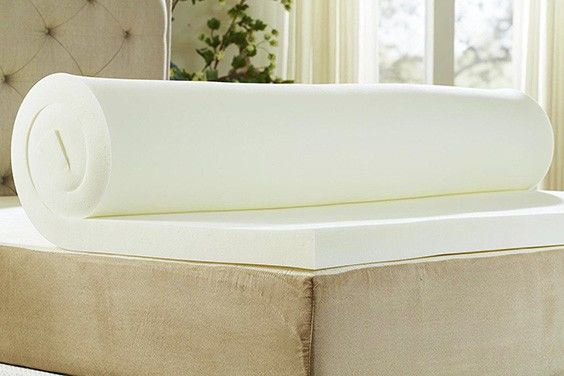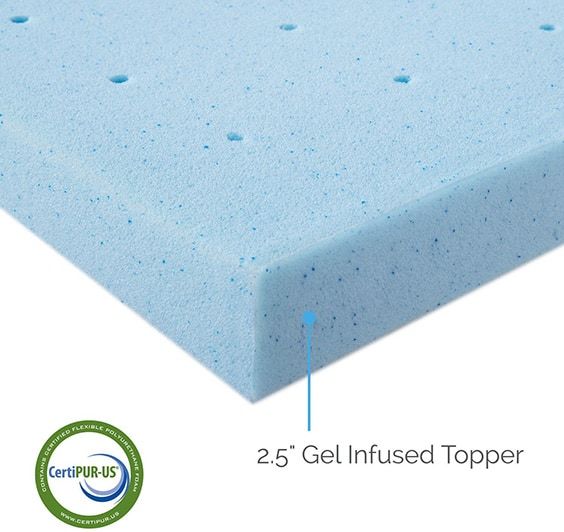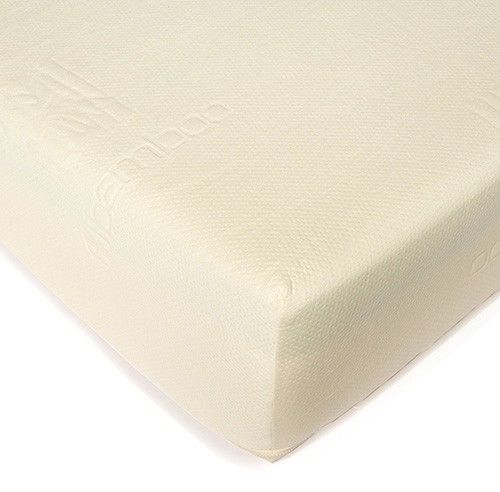Traditional memory foam took the mattress industry by storm in the 1990s as consumers were attracted to the cradling it provides. Not only does this prove effective in reducing pressure on your joints, but it also helps improve your blood circulation. Another huge selling point was the fact that memory foam is highly effective in reducing motion transfer.
I can recall an early commercial that captured my attention when a lady was jumping on a white memory foam mattress next to a full glass of red wine. It looked dangerous, but the wine didn’t move a bit, and I later purchased a traditional memory foam product of my own! Consumers were further impressed that they could take advantage of such amazing qualities on a product that’s antimicrobial to help those with allergies and facilitate an overall more healthful sleep environment.
More Than Meets the Eye
Things have come a long way since the emergence of traditional memory foam, and you have likely come across various types of memory foam mattresses. What you probably didn’t realize is that there’s much more than meets the eye when it comes to this material.
There are different chemical combinations that are used in manufacturing. While they will all leave a handprint when you push down on them, they each feature their own unique properties that make a difference in the way they feel. Even the same manufacturer may employ a variety of formulas in order to offer their customers the ability to choose what will work best for them. However, you can only take advantage of this variety if you understand how these chemical combinations work, so let’s delve in!
Temperature Sensitivity
Memory foam, in general, responds to heat and pressure. When you lay on the mattress, you can expect it to soften as your body heat has a chance to make its way into the layers. However, the degree of temperature sensitivity varies. Products that are more temperature sensitive will become softer when you lay on them, and the areas around your body will be firmer. This largely dictates the level of “hug” you experience on the product.
Response
If you’ve ever experienced memory foam, then you know that, when you apply pressure, it takes several seconds for the mattress to resume its original form. The product will typically maintain the impression as memory foam is known for its slow response. Formulation modifications can have an effect on this response time. A product with a high level of viscosity will leave a longer-lasting impression. However, if this isn’t the property of memory foam you’re interested in, look for a product with a higher degree of elasticity.
Temperature Control Technology
If you’ve taken some time to research memory foam, you have likely gone through lists of pros and cons. One of the biggest complaints about this particularfoam type is that memory foam tends to sleep hot. A restful night’s sleep is facilitated when the body temperature is slightly lowered, and there are numerous benefits to be taken advantage of when you find a product that allows you to achieve this. While this may be demotivating in your analysis of the different types of memory foam, the good news is that various formulations have been developed that allow memory foam to cool more easily.
Keep in mind that traditional memory foam was developed for aeronautic safety, not sleep. However, since it entered into the sleep product industry, innovative producers have listened to feedback and made the necessary changes in order to appeal to a larger customer base. Traditional memory foam does not feature an open-cell structure. Therefore, it’s difficult to achieve the airflow necessary to stay cool. However, there are solutions that have proven efficient.
Open Cell Technology
Open cell technology has greatly improved the traditional memory foam mattress. The traditional model can be likened to a clogged pipe. When something is in the way, water is unable to flow, and you can end up with serious plumbing issues. However, once that hindrance is removed, water is able to flow. In the case of traditional memory foam, the product doesn’t offer sufficient “plumbing” to facilitate the level of heat the average person emits. Open cell technology offers air flow through the provision of billions of balloon-like cells with small air passages in and around them. This allows air to easily breathe through the product rather than simply becoming trapped. When you lay on the product, it forces air through these passages. Think of it like flushing a toilet with a clean and clear plumbing system! You just can’t achieve this with closed-cell memory foam. Just a few other benefits you can take advantage of include:
- Typically feature a higher degree of durability since as air pockets don’t become trapped. This can cause the mattress to develop permanent body impressions over time.
- Long-term contouring, support, and comfort
- Highly permeable
Understanding Aircool Memory Foam
Another heat transfer solution can be found in aircool memory foam. This option responds more quickly to your body heat, allowing the product to soften faster and more efficiently channel heat out of the product. On its own, this can help transfer heat more readily and, when combined with open-cell technology, sleepers have a solution with proven results.
What Is Gel Infused Memory Foam?
Gel infused memory foam is another option for those concerned with the inability of traditional memory foam to disperse heat. You have likely come across this technology in sports equipment and shoe inserts. An aqueous substance, gel is known to take on the temperature of its surroundings. Therefore, when you lay on the mattress, it’s capable of absorbing your body heat, and this helps keep the product cool.
While some customers and studies have shown this to be effective, the differences are often minimal.
A great example can be found in the Bear mattress. I had the chance to review this product. While it was a great option for those suffering with aches and pains associated with strenuous activities, it didn’t fare so well when it came to heat transfer capabilities. This product features a top comfort layer of Super-Cool Graphite Gel Memory Foam. Using a thermal imaging camera, I examined the product after laying on it for 30 minutes in a temperature controlled setting. The average time it has taken for all the products I’ve reviewed is right around 11 minutes. However, Bear took 17 minutes to cool back down.
Think of it this way. If you’ve ever used a gel ice pack, you know that it’s cold when it first comes out of the freezer. Throughout the day, it becomes warmer until it reaches room temperature. At this point, it is no longer able to serve its purpose in keeping your food cool. Likewise, as the gel beads found in gel memory foam become “saturated” with heat, they reach a point where they can absorb no more. At this point, you can expect your mattress to heat up.
Plant-Based Memory Foam
One of the most frequently overlooked memory foam types is plant-based. What is essentially done in the plant-based manufacturing process is the replacement of a large portion of petroleum used to produce traditional memory foam with plant-based oils. This allows consumers to take advantage of a number of benefits. Just a few of these include:
- Often, an increase in breathability
- Free of common chemicals found in other types of memory foam such as CFCs, formaldehyde, phthalates, PBDEs
- Eco-friendly
While there are still volatile organic compounds released with plant-based products due to the use of binding agents in manufacturing, they are typically less than what you’ll experience with other memory foam products. This means off-gassing will be less pronounced.
An Informed Decision
As you carefully consider whether or not memory foam will be the right choice for you, I hope you have learned a few things to help you through the process. Here at The Sleep Judge, we make it our goal to point consumers in the right direction.
Finding the right memory foam type is not a one-size-fits-all endeavor, and you owe it to yourself to carefully consider the various properties on the market so you can make the best possible investment. If you have questions or comments, please leave them below. We’ll get back with you promptly to continue to guide you to an optimal choice for your needs

